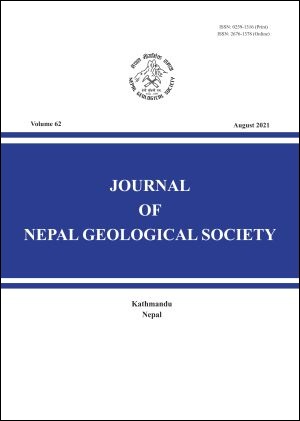Geotechnical characterization of Beka-Gotto rock massif (Adamawa Region-Cameroon) for the use in civil engineering
DOI:
https://doi.org/10.3126/jngs.v62i0.38693Keywords:
Geotechnics, Petrography, Beka-Gotto, Civil engineering, Rock massifAbstract
Beka-Gotto is a village of Ngaoundal located in the Adamawa region (Cameroon). The present study is carried out to determine the physical and mechanical characteristics of the local rock massifs, in order to determine their possible uses in various fields of civil engineering. The methodology used consists of petrographic and geotechnical characterization of the different massifs. The rocks crop outas domes or slabs. The rock is light gray. Under the microscope, the rock presents a grainy microstructure composed of plagioclase, potassium feldspar, biotite and quartz. Zircon and opaque minerals represent the accessory phase. With this composition, rock is granodiorite. The geotechnical study, on the other hand, made it possible to understand that, on the physical level, the rock massif has very good properties. In fact, the specific weight on class 6/10 and 10/14 obtained has mean values of 2.73 and 2.68 kN/m3 respectively. While the apparent density obtained of the class 6/10 and 10/14 has mean values 1.35 and 1.46 g/cm3 respectively. Mechanically, Los Angeles coefficient is 24-46.3% while the Micro-Deval coefficient is 7-35% and the coefficient of dynamic fragmentation is 18-30%. In accordance with geotechnical standards, with the exception of the Gbago massif, the other massifs have a choc resistance and a wear resistance of satisfactory to limited grade as well as good resistance to dynamic fragmentation and therefore usable in any type of structure.
Downloads
Downloads
Published
How to Cite
Issue
Section
License
© Nepal Geological Society




